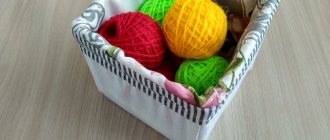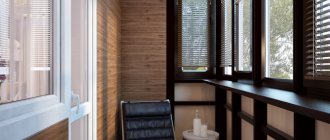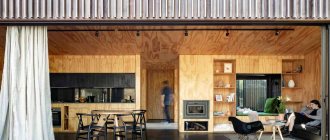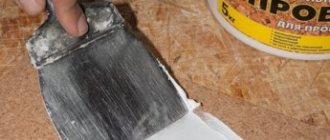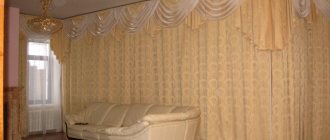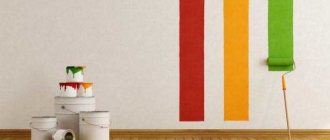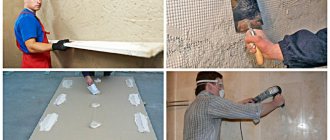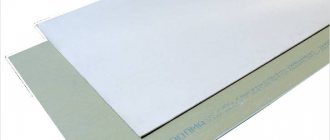Before the renovation, we spent a long time deciding how to decorate the walls. The easiest way was, of course, to paint it, but I wanted something original and stylish. And then the idea came - to cover part of the wall with fabric. We decided on this adventure, and we really liked how it turned out. But keep in mind in advance that this is a two-person job, so don't try to do it alone.
Consumables:
- textile;
- wallpaper glue;
- brush + roller;
- masking tape;
- putty knife;
- fabric knife.
Interior decoration with fabric upholstery instead of wallpaper on the walls: relevance in the interior
Page navigation
Using fabric to decorate the walls instead of the usual wallpaper will give the room a special shine and novelty. Many leading interior designers believe that paper wallpaper is a thing of the past, and the future of design art lies in fabric finishing. Its relevance is obvious:
- chic appearance;
- such repairs can be done with your own hands;
- not typical and novel design.
You can use any type of material: from thin linen to thick velvet, from the simplest textiles to expensive silk.
Surface preparation
The process begins with cleaning the walls from dirt. Cracks, potholes and other defects visible on the surface are cleaned with a steel spatula to form durable plaster and sealed with mortar.
Minor cracks, crevices, and nail holes are only cut with a steel spatula and firmly sealed with putty. All repaired areas must be dried before wallpapering. After repair, the surface should be sanded well with sandpaper, removing roughness and individual grains of sand.
Walls previously painted with adhesive or lime paints are completely cleaned of plaque with water and a spatula.
Stains on the surface of the walls, if they can appear through the fabric, should be painted over with nitro varnish, nitro enamel or sealed with thin aluminum foil.
All other types of film and roll materials previously pasted must be removed.
Oil stains should not be removed. It must be washed with water and soda or soap and dried well. The surface painted with enamels is also washed and cleaned with sandpaper.
If the surface is covered with dry gypsum plaster or plasterboard sheets, first putty the joints with gypsum mortar, then cover them with gauze, putty again and sand them with sandpaper. The nails are recessed to a depth of 1 mm, the heads are painted over with oil paint, the recesses are puttied and sanded after drying.
Surfaces made of particleboard, fiberboard and plywood are prepared in the same way. Seams at the joints of sheets and places where nail heads are recessed in sheets are sealed with putty for wooden products. Dried surfaces are sanded and cleaned of dust.
Plank surfaces intended for pasting with materials are pre-upholstered with fiberboard or cardboard, followed by the operations described above.
Textile wall decoration: fabric requirements
The quality and attractiveness of the chosen drapery depends on the quality of the textile. Experts do not recommend using some natural materials, such as linen or cotton, and prefer synthetic or even mixed ones.
Optimal types of decor textiles:
- natural fabrics - jacquard, jute or sisal;
- from artificial fabrics - viscose, polyester or polyamide.
These fabrics do not stretch, do not sag over time, and are easy to work with. To increase sound insulation, it is better to use heavy fabrics, such as jacquard. In a room with high humidity, use synthetic materials treated with a moisture-repellent composition.
Where is it used?
Plain or designer fabric is used to decorate the walls. Some brands produce such materials on purpose.
Canvases come in different textures, colors, and densities. But still, they are all similar in basic qualities, because it is a matter made of fibers.
Please note: fabric should not be used in rooms with high humidity and increased fire risks. The method is not suitable for rooms where constant contact with the walls cannot be avoided.
Such walls fit appropriately and practically into the interiors of bedrooms, living rooms, and offices.
Some elements look good in hallways and dressing rooms.
Restaurants, hotels, clubs for VIP areas love the reception.
Important! When choosing a location for placing fabric, it is important to think in advance about the possibility of proper care. If cleaning is difficult, it is better to abandon large volumes or replace the finish altogether. The entire room is rarely covered with fabric.
Bedrooms
The main recreation area has the widest range of uses.
With fabric you can make:
headboard without built-in headboard
accent place opposite the bed
walls around a separate window or window groups
Draperies, combinations with colors, and imitation canopies made of material and drywall look original.
Living rooms and offices
Zoning with fabric for the television and dining area, workplace and reading corner looks beneficial. The scope of imagination is limitless.
Here it is important to select materials that are similar in density to furniture upholstery, carpets and curtains.
Advantages and disadvantages of fabric drapery
Like any design solution, finishing with fabric has both obvious advantages and disadvantages.
Advantages:
- the ability to create an atmosphere of comfort;
- suitable for any interior style;
- keeps clean for a long time;
- stronger than regular wallpaper;
- allows you to hide problem areas;
- there is no need to prepare the walls themselves;
- there is no damage due to shrinkage of the building;
- such walls guarantee free access of air;
- do not fade for a long time;
In addition, finishing with fabric does not require special preparation.
Minuses:
- expensive material;
- it is difficult to install electrical sockets and switches;
- it is difficult to choose glue for the chosen fabric.
Despite these disadvantages, more and more people prefer fabric decoration. In addition, the choice of finishing materials is increasing every day.
How to sheathe or glue fabric on the walls of a house with your own hands: master class
Fabric finishing is carried out in several ways:
- paste over;
- upholstered with material;
- drapery.
In addition, partial finishing is practiced: decorating niches, appliqué, and designing a zoning screen.
Work progress
This traditional method has advantages: the upholstery can be easily removed to wash, or even replaced with another one.
Execution steps:
- Nail slats along the perimeter of the wall, forming a frame, which is made from the simplest materials: wood, metal, plastic, or use a kit for attaching a stretch ceiling.
- Cover the frame with canvas: secure it with furniture staples, self-tapping screws or small nails. You need to start from the top corner, then fix it from the bottom and finally the sides.
- Decorate the attachment point if the upholstery is nailed. Cover the fastening points with a decorative cornice on top and with a plinth at the bottom.
The frame can be filled with thin foam rubber. This will help retain heat and create additional sound insulation.
Wall upholstery: how to fix it on a large surface
You can cover walls with textiles in 2 ways:
- put the material under the rail;
- nail the fabric over the batten.
Work progress:
- Cut out the fabric, allowing approximately 8-10 cm on each side.
- Use nails to secure it at the top corners, pulling the material as tight as possible.
- Start fixing the decorative strip from the top corner. The fastening step is about 20 cm. You can use self-tapping screws for this.
- After securing the top, secure the bottom at the corners as well. Mask the fastening points with a decorative strip.
- Secure the trim with fabric strips on the sides.
- If necessary, remove excess fabric.
Pasting fabrics on the wall: how to glue
This method is the most labor-intensive. To carry it out you need 2 people. In addition, it requires additional preparation of the wall:
- First clean the wall surface, then putty and prime it.
- Soak the material in water in advance, dry it and iron it to prevent shrinkage.
- From the existing fabric, sew a canvas corresponding to the size of the wall plus 18-22 cm.
- Roll up.
- From one edge, glue is applied directly to the wall so that an even strip of 10 cm is obtained. Apply the canvas to it (taking into account all the allowances made).
- The next strip of glue is applied along the top.
- Apply glue to side 2, and then secure the canvas.
If the wall is complicated by a doorway or window, it is better to start pasting from the top and increase the allowance to 25 cm.
Creating fabric drapery
Drapery is the most complex and expensive way to decorate a room.
It will require much more material than the total area of all the walls of the room. Work progress:
- Measure the height of the drapery.
- One edge of the canvas is fastened in the upper left corner with a small nail, the other in the right. The material should be as stretched as possible during the fastening process.
- Secure a wooden strip on top of the fabric using self-tapping screws and a screwdriver. The fastening pitch is up to 30 cm.
- The same technology is used to attach the drapery at the bottom of the wall.
- Excess material is cut off with a knife.
This method of stretching the fabric is similar to the two previous methods. There is only one significant difference - the rail is fixed on top of the canvas.
To ensure that the fabric at the bottom and top does not fray for as long as possible, you need to set its dimensions correctly and add 2-3 cm to the resulting values. The excess is tucked and masked under the strip.
Window decoration with tulle
With the help of our tips, you can easily complete window coverings.
Necessary materials
To complete the work, you will need the most common tools and materials: lace fabric, a wide brush, scissors, a tape measure or ruler, starch for glue.
Preparation of starch glue
Synthetic glue should not be used for decoration. It can turn yellow from the sun, emit unpleasant odors when heated, and will cause trouble if you want to peel off the tulle or replace it with material with a different pattern.
The best thing to do is to prepare an environmentally friendly and reliable adhesive solution yourself.
Algorithm for preparing starch glue:
From corn starch
- Boil water. For work you will need: boiling water - 350 ml, cold water - 2 tbsp.
- Combine corn starch
- Add boiling water , stir everything carefully until we achieve a homogeneous consistency. Let the stirred mixture cool. After complete cooling, the glue is ready for use.
From potato starch
- Heat 3 liters of water, but do not boil!
- Pour potato starch (1 tbsp) into warm water.
- Thoroughly stir the starch in the water until it is completely dissolved.
Important! Use high-white starch to prepare glue; glue made from such starch will not turn yellow.
Selection of suitable material for gluing
Decoration is attractive due to its cost-effectiveness. You don't need to buy a new lace fabric to work. Every housewife will find material suitable for the job from old curtains. From the available tulle, select a piece suitable for the size of the glass: the fabric should be slightly larger than the glass.
General recommendations for interior stylistic solutions
It is possible to decorate walls with textiles:
- Partially, when natural or synthetic materials are used to finish individual parts. So for decorating only the wall near the bed or fireplace or mirrors.
- Completely, at the same time, a combination of fabrics belonging to the same color scheme can add sophistication, or, on the contrary, the combination of materials can be based on the contrast of shades or patterns.
- Textile elements cut out using a stencil, for example, rhombuses, ovals. This will add zest and originality to the interior.
Individual elements of the canvas can be glued to the prepared surface, or stretched onto the frame.
Option 2: imitation of noble antiquity
If your wall is not completely perfect and you don’t want to get a clear pattern, then you can imitate noble antiquity, when the pattern barely appears and looks like it’s 100 years old.
Don’t get carried away, to imitate antiquity, the drawing should only be barely visible
After this, you can liss the wall with acrylic varnish, slightly emphasizing the result.
Can walls covered with fabric be cleaned?
Walls decorated with fabric can be vacuumed, washed, and cleaned using special cleaning products. This can be done either independently or by turning to the services of a cleaning company.
When using a cleaning product for the first time, you should first test it on a small section of the wall, located in an inconspicuous place. This will allow you to evaluate the reaction of the canvas to the drug. It’s even better to save a separate piece of drapery for this purpose and experiment without fear of harming the drapery.
The main thing is that when stains appear, do not delay their removal, but start cleaning as soon as possible.
Option 1: the simplest with a clear picture
The most important thing in this matter is high-quality preparation of the foundation. It is very difficult to achieve a good result on uneven walls. Therefore, if you are planning a renovation, do not waste time on the preparatory work.
Using a spatula, apply textured paint or plaster directly over the fabric. Iron so that the paint penetrates through the mesh of the design. This will have to be done quite quickly, because further manipulations with the fabric must be carried out until the paint-plaster has dried
Depending on the lower tone, the pattern will turn out brighter or paler. You can make the second layer simply white or tint it in a contrasting color. If you take two close tones, the pattern will turn out to be insignificant and barely noticeable, if this is exactly what you need - please
The difference in patterns also depends on your tulle. The more transparent it is, the greater the second tone will be and vice versa
Old “Soviet” tulles with a clear and voluminous pattern are very good at working. After use, until the water-soluble paint has dried, the tulle can be rinsed and used for this purpose again.
Alternative options: how to glue textile wallpaper
Basic rules for using textile wallpaper:
- To glue a roll on a non-woven base, the glue is applied directly to the wall, and the wallpaper itself is not processed. Only paper-based wallpaper can be coated with glue. But in both cases, it is necessary to strictly ensure that there is enough glue, but without excess, otherwise the canvas may become soaked through.
- If the glue has come out in the area of the seams on the outside of the wallpaper, then it is better to replace the canvas immediately.
- To minimize the risk of getting defective, you should glue 2 canvases and wait until they dry, and then evaluate the quality of the work. This will help you identify and correct mistakes and adjust your further actions.
An expensive but convenient option is seamless systems. The fabric used to install suspended ceilings is perfect for decorating a room. Its quality and other parameters are suitable for this purpose.
Pasting process
How to stick tulle on plastic windows:
- Clean the window from grease and dirt.
- Prepare the glue.
- Use a measuring tape to find out the height and width of the window opening.
- Write the resulting dimensions on paper. Draw a triangle using a ruler and pencil.
- Measure 0.5 centimeters near each edge of the triangle. This is required so that the material can tighten when the glue dries.
- Create a paper pattern.
- Attach it to the fabric.
- Outline the pattern with soap.
- Cut out the pasting.
Gluing tulle is very simple, but before doing this you should thoroughly wash the area on which the fabric will be glued.
The glass must be cleaned and thoroughly wiped with alcohol. After which you can safely create fabric blanks. There are two processes for gluing:
- Apply glue to the window, attach the fabric, smooth it out and apply glue on top again. Wait for it to dry and the decoration is ready.
- Dip the fabric in glue. Make sure every millimeter gets into the liquid. Leave the material in the bowl for a couple of minutes so that it is well soaked. Unscrew the glue from the canvas a little. Straighten the fabric and stick it to the window. It is important that there are no folds left. When the glue dries, the decor is ready.
Care
Cleaning fabric drapery is easy to do yourself. This will allow you to save on the services of a cleaning company. Here are some tips to help you avoid fatal mistakes:
- in case of normal contamination, the stain can be removed with a regular soap solution;
- When processing the fabric, you need to move from the very edge to the center so as not to smear the stain even more;
- the fabric must be vacuumed regularly, otherwise a lot of dust will accumulate in it;
- water-repellent impregnation will help reduce dust settling;
- Do not rub the stain remover directly into the fabric.
Friction is suitable only for abrasive special cleaning products, but for products that remove dirt through chemical reactions.
Walls decorated with fabric look beautiful and rich, but they will not be cheap and will require regular maintenance. And the decorating process itself is not easy. But a modern and original stylistic solution will be guaranteed.
Advantages of window decoration with tulle
Tulle for plastic windows is a practical lace design that has a lot of advantages:
- Ease of decoration. Anyone can complete this task, including a child.
- No complicated equipment or tools.
- Economical. You don’t need to buy or spend a lot of money, just take a piece, which any housewife is sure to have. The main condition is smooth edges without defects.
- Beautiful view. A wide variety of designs allows you to add a special zest to the interior of any room.
Tulle on glass instead of curtains has another advantage - no cornices, baguettes or frames. And the result in the end is pleasing to the eye.
Examples in the interior
Before you start gluing, you need to decide on the fabric. You can choose from the following options:
- Light lace tulle. It is better to purchase a new piece of light, airy fabric. Heavy canvases will not be able to stay on the paste for a long time.
- Cobweb. This is a unique weave made of synthetics and silk. The fabric is light but at the same time strong. With its help you can create a beautiful and delicate pattern like frosty snowflakes.
- Lace. For design purposes, lace made by machine knitting is better suited: in the form of openwork or guipure. Do not use handmade curtains; they are denser and do not attach well to paste or soap.
- Vintage design. In this design it is better to use cuts from bins. But without flaws or stains. This solution will be the perfect complement to the retro style.
Photos of window curtains will help you make the right choice.
